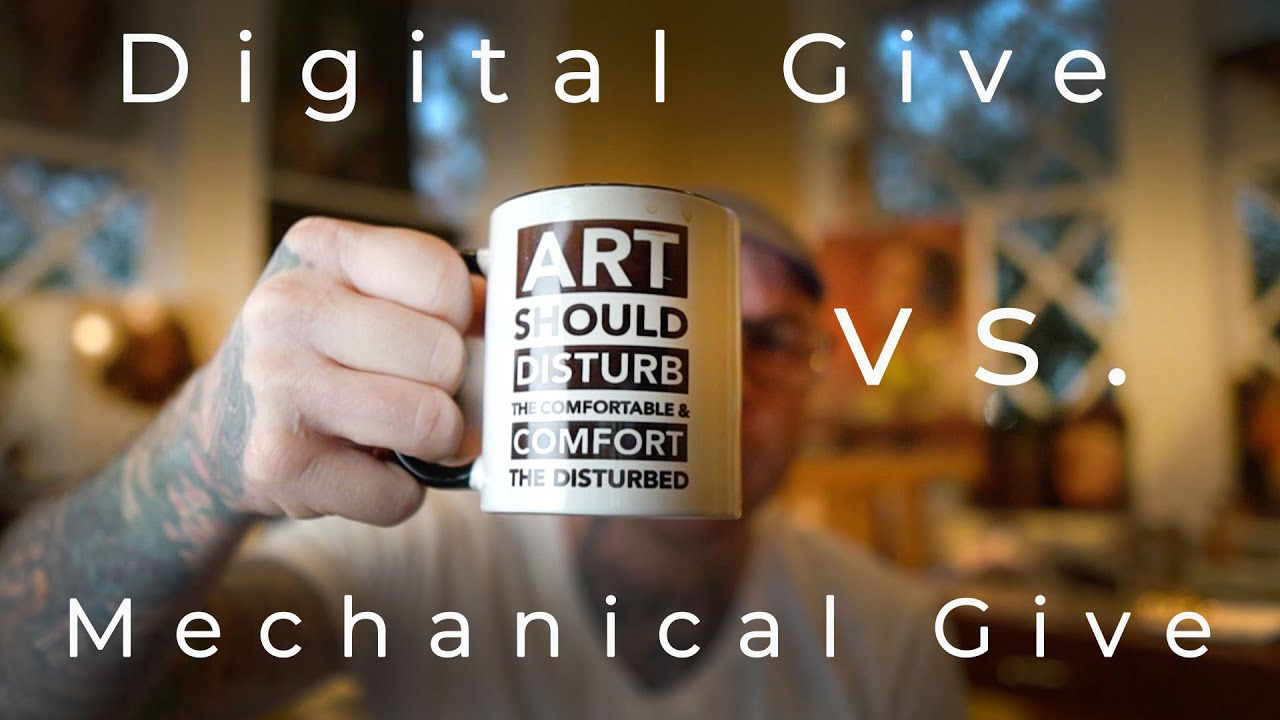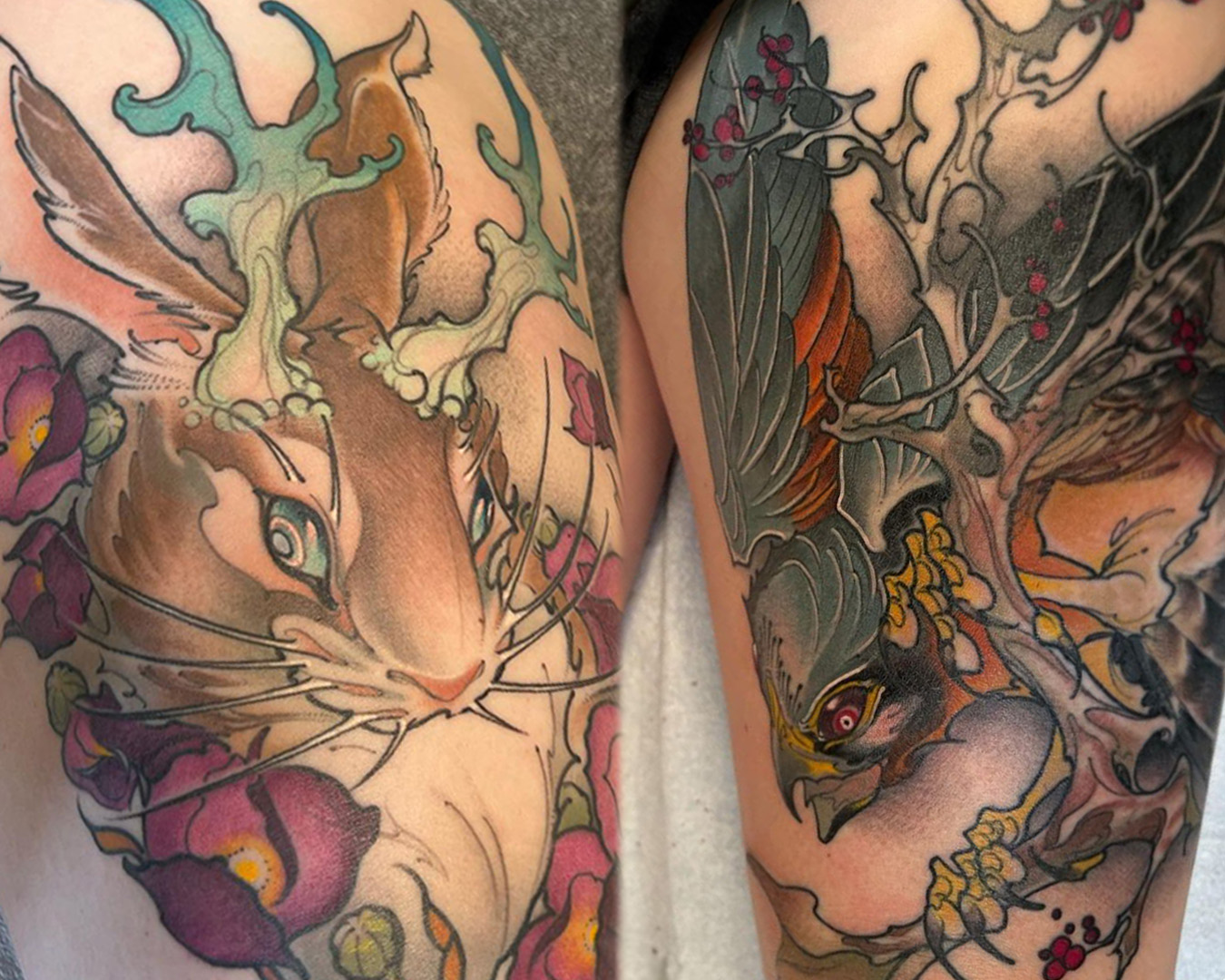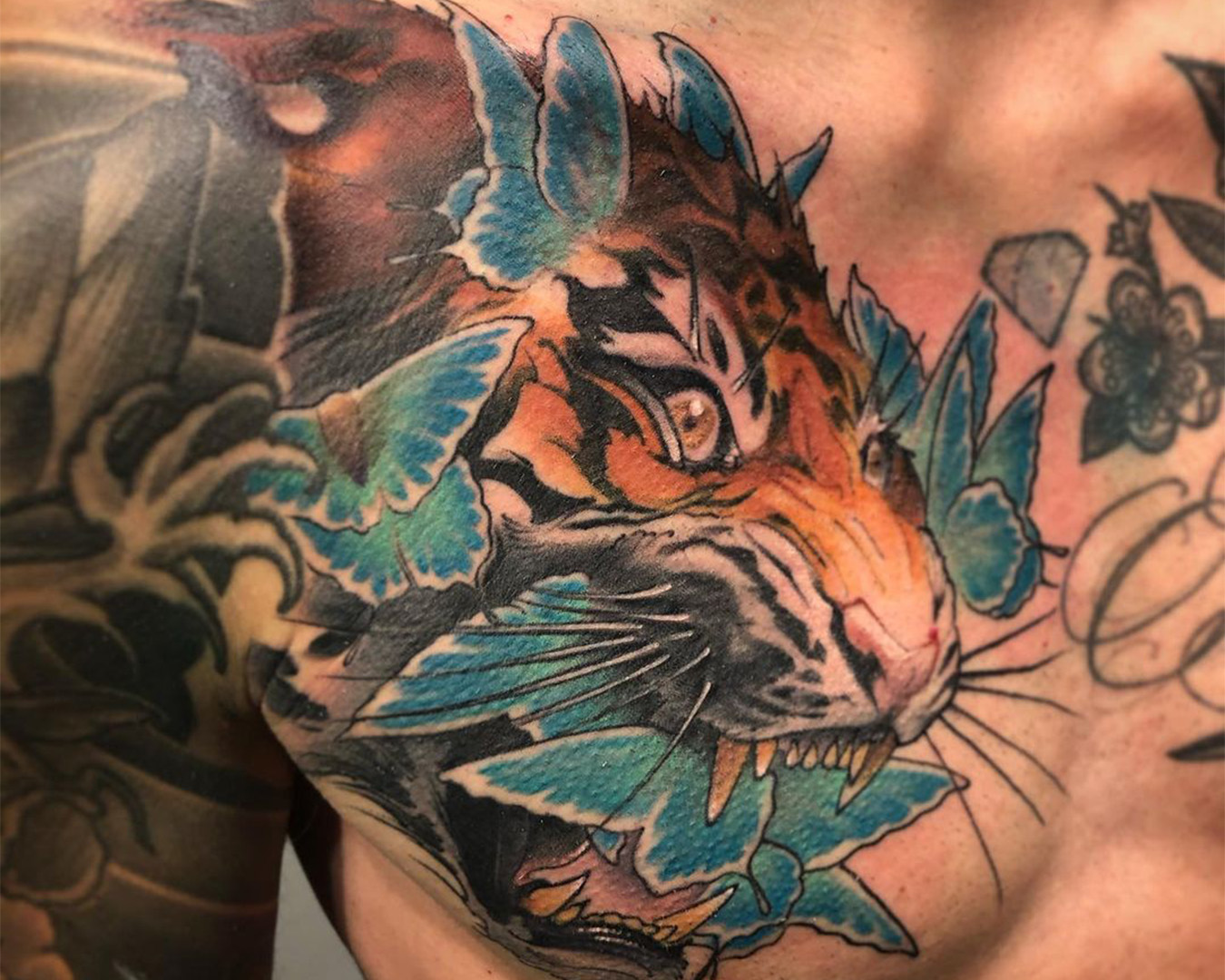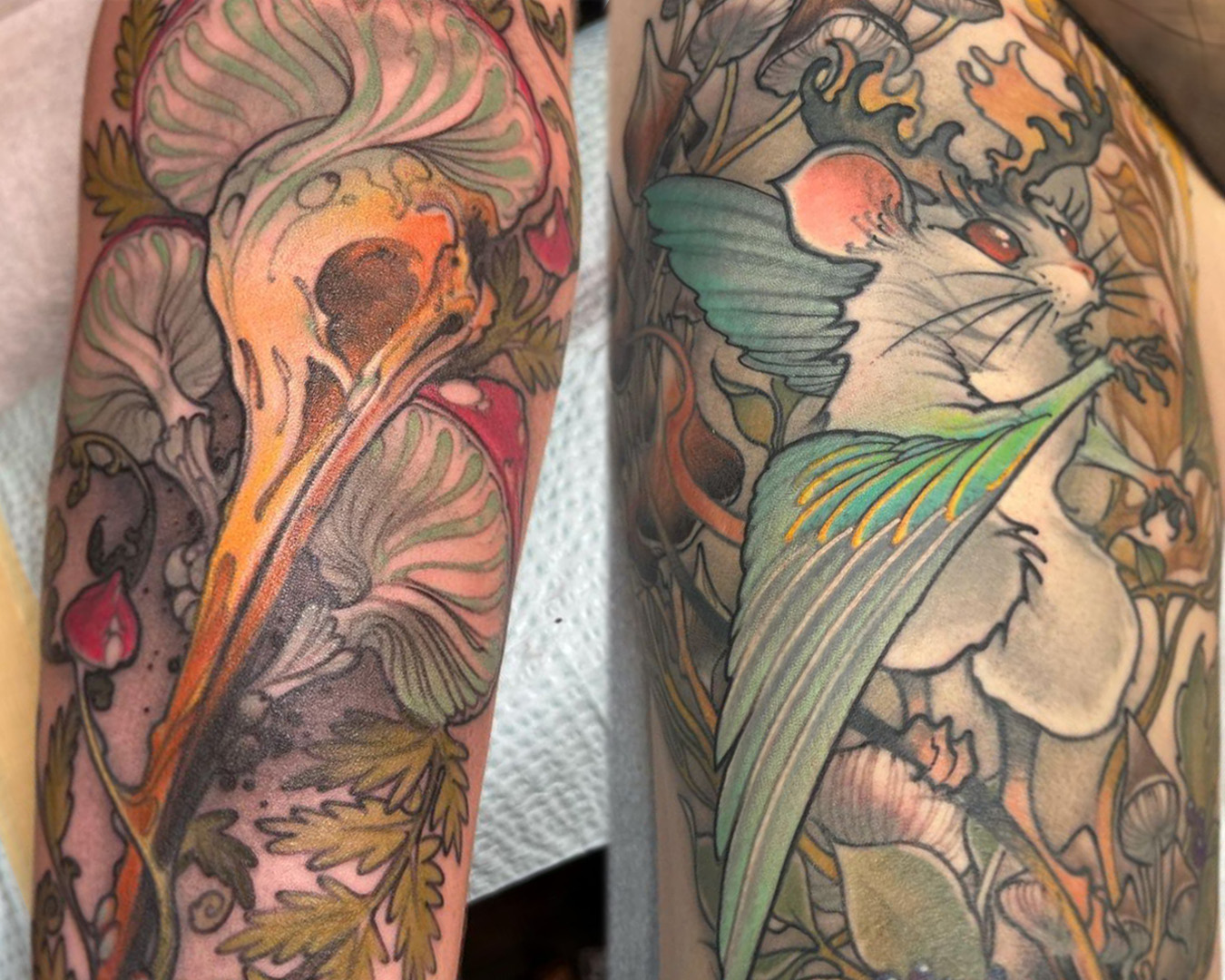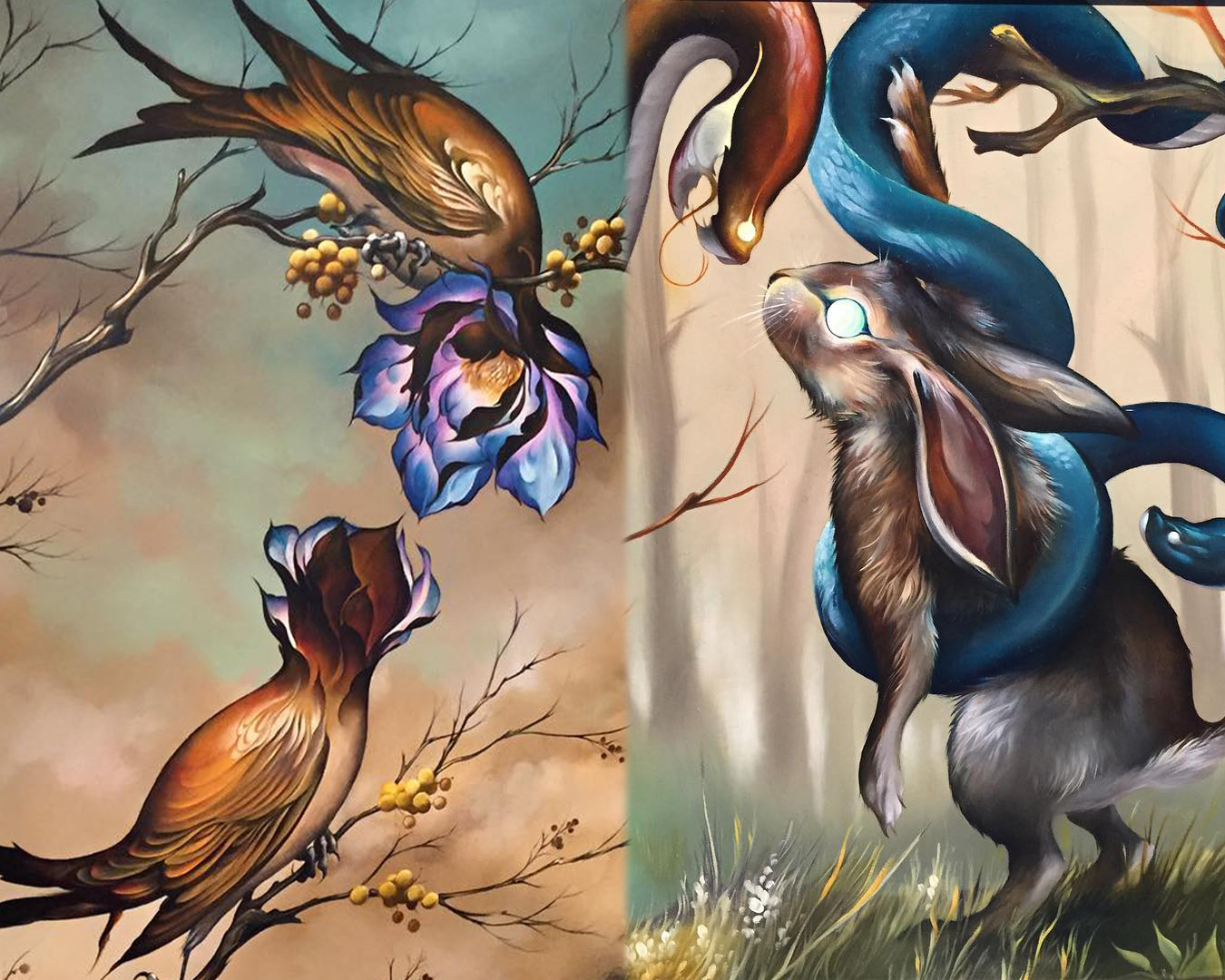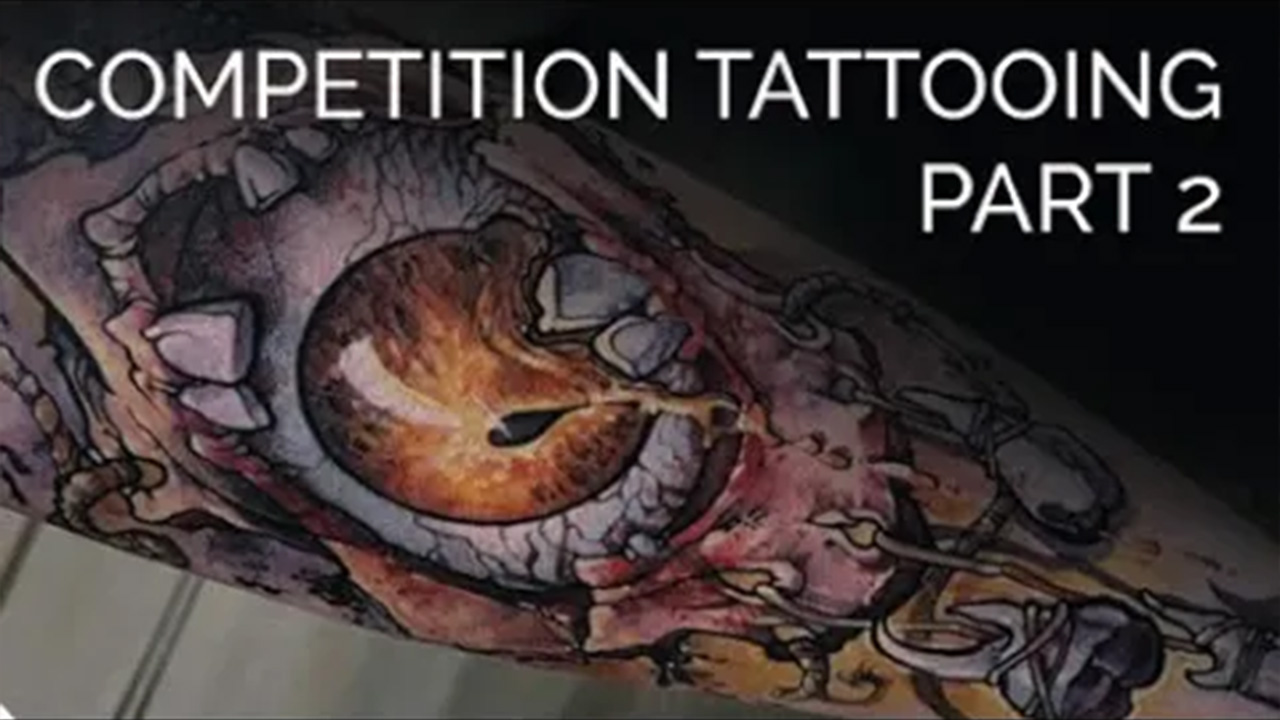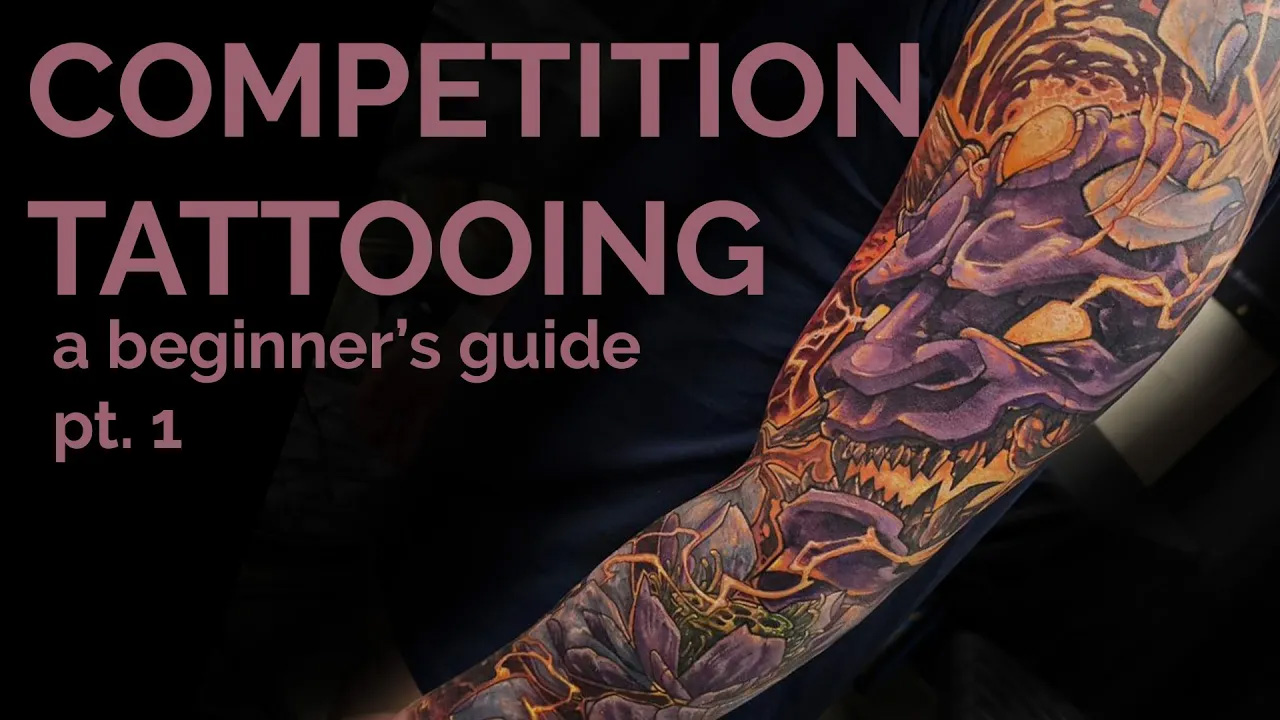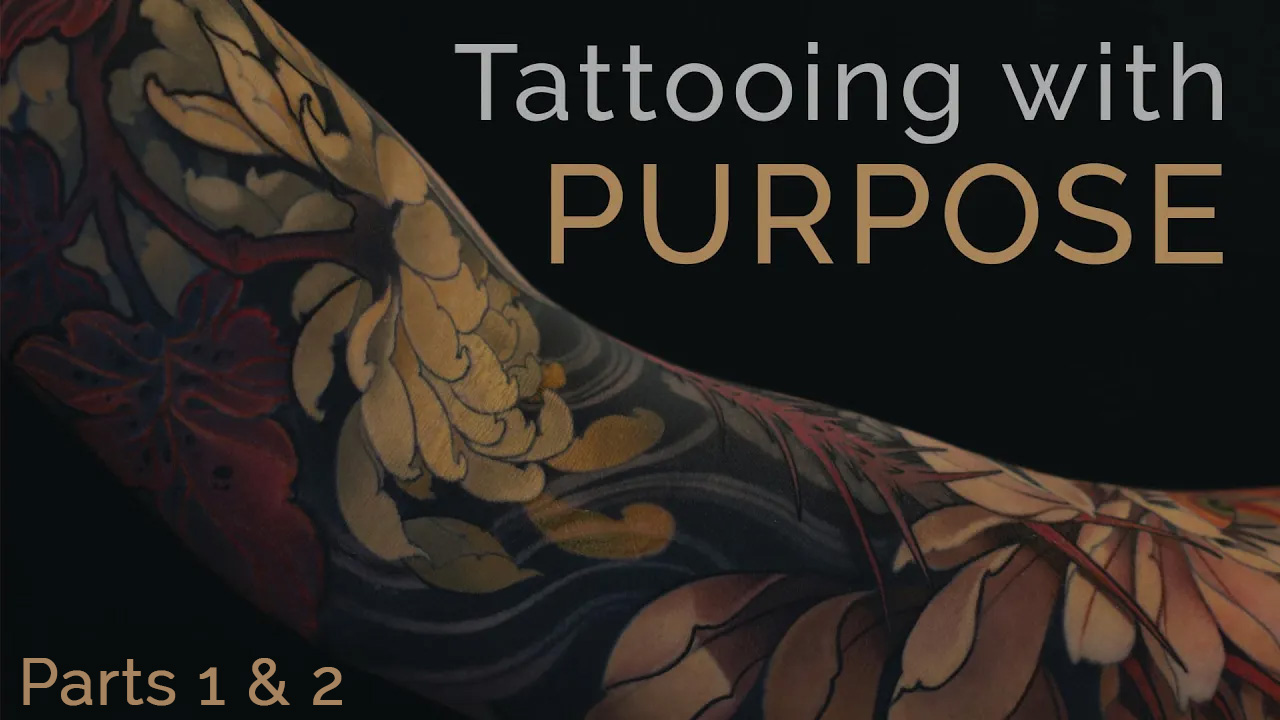Drawing For Tattoo Design: Breaking Rules the Educated Way Corey Bernhardt Ep 168
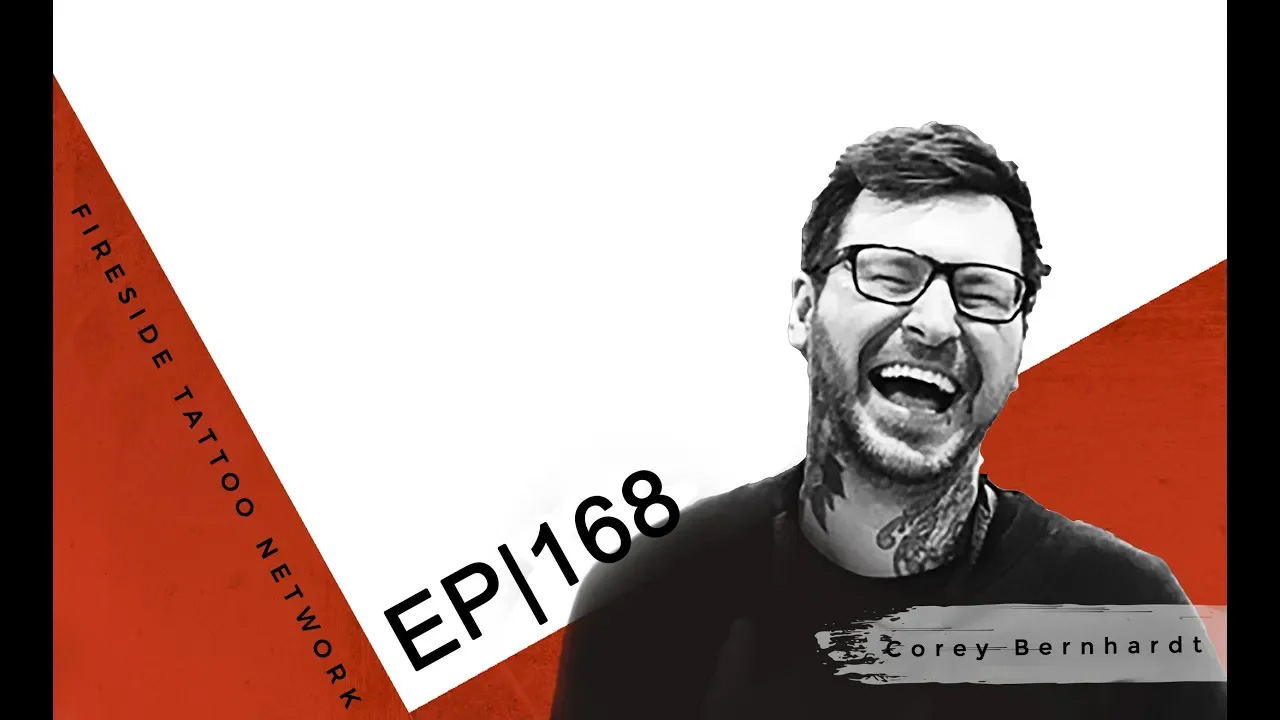
Breaking Rules The Educated Way | Corey Bernhardt | EP 168
Corey Bernhardt loves what he does, and he's really good at it. In this episode from the Evergreen Tattoo Invitational, Corey dives into his thoughts on painting, tattooing, and how he marries the two.
This episode was made possible thanks to:
Interview by By Jake Meeks —
Writing By Daniel Pushcarich —
Topics: Art, Painting, Tattoo Composition, Design Composition, Oil, Painting, Leaving Open Skin In A Tattoo, Simplifying Designs, Critique, Mentors, Art Teachers
“The more you learn the fundamentals you’ll start to learn fundamentally how to break them, and break them in an educated way. And, that’s what we call style.”
— Corey Bernhardt
Corey Bernhardt (@cbernhardt.tattoo) has spent most of his life dedicated to art. With a love for painting, mostly with oils, he can often be seen taking mini breaks from tattooing to dedicate time to fine art. This helps him to naturally improve artistically, both traditionally, and in the tattoo world, and has helped shape his style today.
His tattoos are primarily illustrative, however in addition to the Illustrative style, Corey likes to work in his interpretation of Neo-Traditional and Japanese. His favorite subject matters are animals, insects, fruit, flowers, and fungus, combined with interesting objects for them to interact with.
Corey is based in Sacramento, CA and owns Neon Tiger Tattoo.
Please enjoy!
INTERVIEW LINKS, MENTIONS, AND SHOW NOTES BELOW…
SELECTED LINKS FROM THE EPISODE
- Connect with Corey Bernhardt:
Neon Tiger Tattoo | IG | Studio IG
SHOW NOTES
- [00:00] Learn The Fundamentals, Then BREAK THEM!
- [02:09] Surprise! It’s The Intro!
- [02:58] Giv'em The Ol' 50/50 Rule
- [06:03] Google And Pinterest Are The New Flash Wall
- [07:55] Didn't Really Like Painting…But Like…Then I Met Jeff
- [09:56] Stuck Between the Needle and the Brush
- [11:58] The Rotating Client Door
- [12:52] Only Post What You Want in Return
- [14:36] Knowing What IS, And Then Starting From There
- [18:07] MMM! That's a JUICY TATT; Keeping Loose, Letting Things Happen
- [22:03] Always Remember To Kill Your Art Babies
- [27:03] Side Hustles And Hair Raising Ideas
- [28:23] Diverse Specialties In The Shop
- [29:45] Hair We Go Again; Why The Hair Business?!
- [30:28] Where to Find Corey? Old Info....
MORE Corey QUOTES FROM THIS INTERVIEW
Giv'em The Ol' 50/50 Rule
[02:58] “You take something very simple that everybody will know, and you kind of take that other 50% and flip it on it’s head a little bit. It makes the viewer stare at it a little longer.”
— Corey Bernhardt
Artists often face difficulty in capturing viewers' attention in a limited timeframe, so it can be very helpful and important to create elements that draw the audience in instantly. The “50/50 rule” in composition suggests presenting 50 percent of the composition as something familiar and relatable to capture the viewer, like a rooster or a skull, and enticing them with the remaining 50 percent, encouraging them to explore and engage with the artwork.
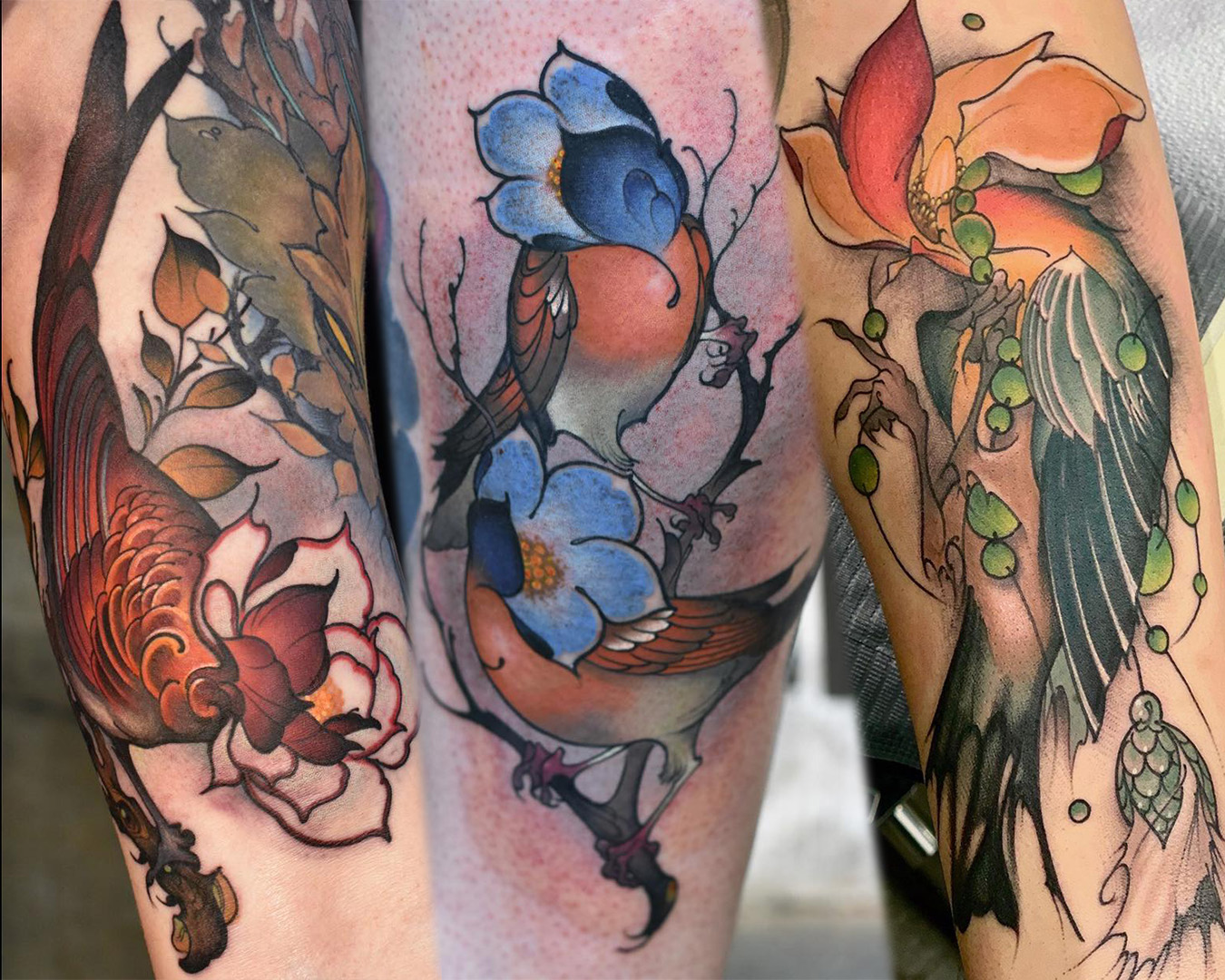
Corey’s “Flower Birds” are a perfect example of this rule. He shows the familiar shapes of wings, feathers, and bird legs while drawing your eye towards the head, then replaces it with an illustrative and surreal flower to disrupt the pattern and pulls the viewer in to figure out what’s going on in the composition. By offering something easily relatable, then simultaneously, the artist can inject an element of surrealism or intrigue, encouraging the viewer to observe and engage.
Another way to draw attention is utilizing storytelling elements Incorporating recognizable features to entice viewers, and contrasting features keep them exploring further. Jake likes to take the hand holding approach, treating viewers as if they were kindergartners, ensuring the initial recognition of key elements. The aim is to guide the viewer's focus with easily identifiable aspects before introducing complexities that spark curiosity.
Knowing What IS, And Then Starting From There
[14:36] “I’m very conscious of placement on the body and what the tattoo looks like at rest. How does somebody view it? If somebody wants a rooster on their upper arm I’ll invert the rooster, because I don’t want a pair of rooster feet hanging out of someone's sleeve.”
— Corey Bernhardt
Because most people that are getting tattooed today already have tattoos, and people are wanting larger and larger work, it becomes difficult to have untethered freedom to create the perfect sleeve or backpiece for a client. Jeff Gogue has an approach that involves solving problems on a different level by understanding what already exists on a client's body, adopting a mindset of "what is" and then considering "what can be." In doing this Jeff has the ability to better map out and expand on a client's current tattoo situation, and leave room for future collaborations with other artists. Jeff's mastery in tying his work efficiently to the body through narrative also touches on the awareness of placement's impact on the overall composition.
Also, something practical to consider is incorporating factors like clothing choices and the client's lifestyle. Advising a client to take photos in everyday clothes provides a unique perspective on considering composition from the outset. Understanding placement becomes a foundational aspect of composition, offering valuable guidance to artists grappling with the initial stages of design.
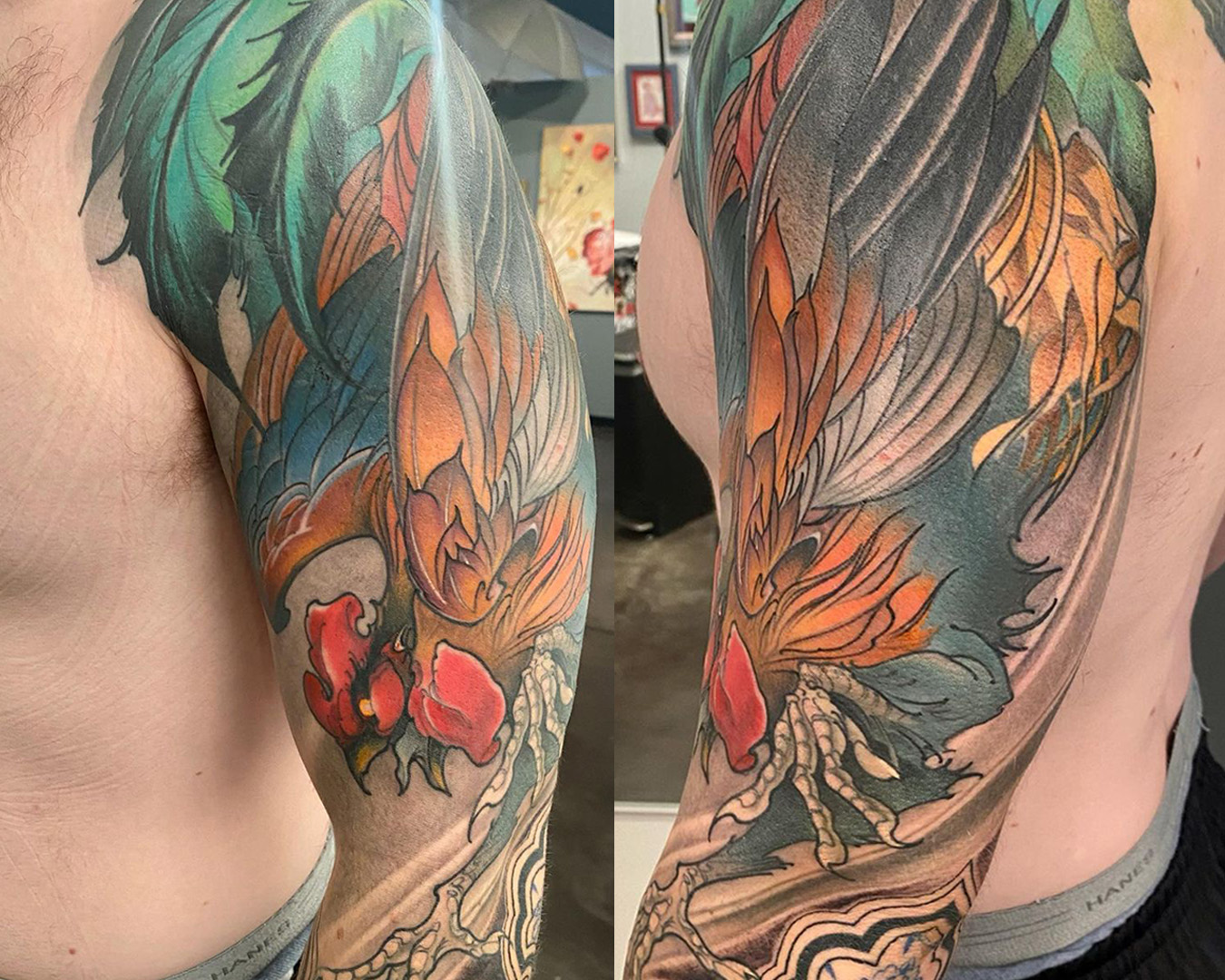
Lastly, awareness of element placement and position should also be taken into serious consideration. Try imagining what the tattoo will look like at rest or in different layouts. For example if you have something like a shark or an eagle going on an upper arm or thigh, you might consider a downward position for the layout. Having the shark tail peak out of shorts or a t-shirt sleeve won’t be nearly as interesting as something like the head or the feathers and wing tips of the bird. And swooping those types of animals downwards along the tricep can also compliment the shape of the body very well.
MMM! That's a JUICY TATT; Keeping Loose, Letting Things Happen
[18:07] “Some of the fluid effects that I’m adding to my paintings are just on the fly, I’m not really sure where it’s going. There’s always some point in a painting where you want to start getting loose letting things kind of happen on their own, that will maybe add to the overall composition at the end.”
— Corey Bernhardt
It’s often beneficial to make a conscious effort of embracing "happy mistakes" and allow spontaneity to play a role in designing tattoos and paintings. Though it can be a challenge to render some painting or drawing techniques in tattooing, it can still be helpful and important to keep it loose and let things unfold naturally during the creative process.
On the other hand, a simpler design is important for the durability and longevity of a tattoo. As artists, we tend to noodle or over render some areas. Though these details look great when the tattoo is fresh, as it ages in the skin it can often muddy up the design. In the same vein, leaving room for the skin tone of the client to show through the design can aid in the simplification of a design. Think of the skin tone as the lightest value in the composition, utilizing skin as a value can reduce overworking the skin and potential trauma, as well as reducing overall work time. By embracing simplicity, you can allow the skin to play its part in the final composition.
Also, consider mastering the art of self-critique by attempting to look at your work objectively. Often we can easily identify flaws in another artist’s work, but find it challenging or a struggle to apply the same insights to our own. It’s a common dilemma of wanting to follow comfortable habits while trying to be open to the creative process and embracing a sense of play in your work.
Always Remember To Kill Your Art Babies
[22:03] “It’s that one thing that you just don’t want to abandon, or it’s the thing that you’re most stoked on in a composition. And it’s not going to work, but you’re just forcing it to somehow make it work…and then finally you’re like…okay. And that’s very frustrating!”
— Corey Bernhardt
Another common pitfall artist's struggle with is prematurely committing to a portion of a design, or investing too early in a shape that may not be working. The trick is to recognize early on when to abandon a cherished idea that doesn't contribute positively to the overall artwork. Sometimes instead of abandoning it entirely you can pocket those ideas as sketches. So, if you feel strong enough about the spot that’s holding you back this can give you room to breathe and move on or start over.
Great value can also be found in having instructors, mentors, and colleagues who provide tough but constructive criticism. Like a painting teacher advising to wipe out a prematurely detailed eye or a mentor compelling the artist to start over by forcefully introducing dark elements or drawing over the piece. The importance of refreshing your eyes and mind emphasizes the value of such teaching methods in fostering artistic growth.
There’s always a desire to move beyond cyclical doubts and struggles in the painting process toward a more refined and controlled approach to executing artistic visions. The struggle we all share is to reach a level of confidence and skill execution where an artist can precisely mix and place colors or pull lines and edges without the need for extensive flourishes or corrections. Skilled painters can sculpt with paint, making deliberate, chunky marks and show restraint in blending or designing. All this being said, having specific practice, repetition, and deliberate self reflection are the main guiding force to composition and design fluency.
PEOPLE MENTIONED
Want more tattoo education and resources?
Check out our Drawing For Tattooers catalog HERE!
Transcript for this video can be found (here). All transcripts can be found (Here)
(Update when transcript page is made)
The Fireside Tattoo Network is home to the Fireside podcast, Fireside Technique video series and our Fireside Weekly blog.
The Fireside Tattoo podcast is hosted by veteran tattooer Jake Meeks, check out our episodes where we discuss, argue and wax philosophical, from tips for all levels of artists to trends in the tattoo world. Many guest artists have sat down for interviews and in-depth conversations and many more are planned…check back often!
Our Fireside Tattoo Overview video series offers informative, short, and detailed videos geared towards helping artists understand the science and nuances of tattoos and make more informed decisions to improve their work. We often take some of our more technical topics from our Fireside podcast and film an in-depth, narrated, time-lapse video showing exactly how Jake or our featured artists handle certain issues.
Support us while buying the stuff you need at the links below!
- Get 10% off the Neuma 4 with code “Fireside” at checkout
https://neumatattoo.com - Get 10 % off all S8 Tattoo products with promo code “Fireside”
https://s8tattoo.com/ - TattooNOW Website and Automation services at the link below
https://TattooNOW.com/Fireside - Get 10% off your order from Raw Pigments with code “fireside”
https://rawpigments.co/
Drawing for Tattoo Design
Your tattoo designs starting to feel stagnant? Feel like you’re not progressing? Drawing is the single most important piece of the tattoo process. No level of technical tattoo skill can overcome bad composition and draftsmanship.
Fireside Tattoo Network simplifies the tattoo design process with the Fireside Method. By focusing on the principles of Shape, Value, Edge and Color, we help you identify and solve your biggest challenges early in the design process.
The Fireside Method:
Check out some of our podcast episodes as well!
Recent News
Inside Fireside: Mentality, Pain Management, and the Art of Client Care with Kurt Jacobson
- 09/06/24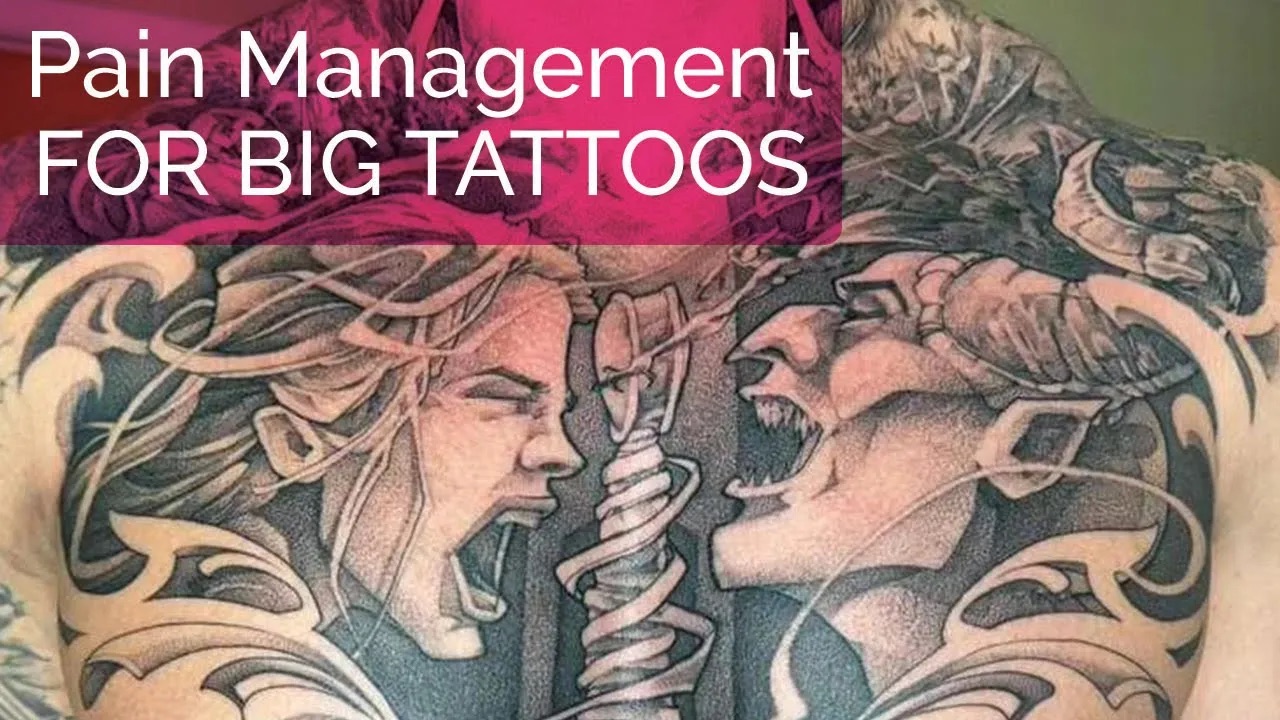
Why Do We Care About Give? - Carson Hill
- 07/24/24